PhotoRobot Robotic Turntable and Robotic Arm V8 User Guide
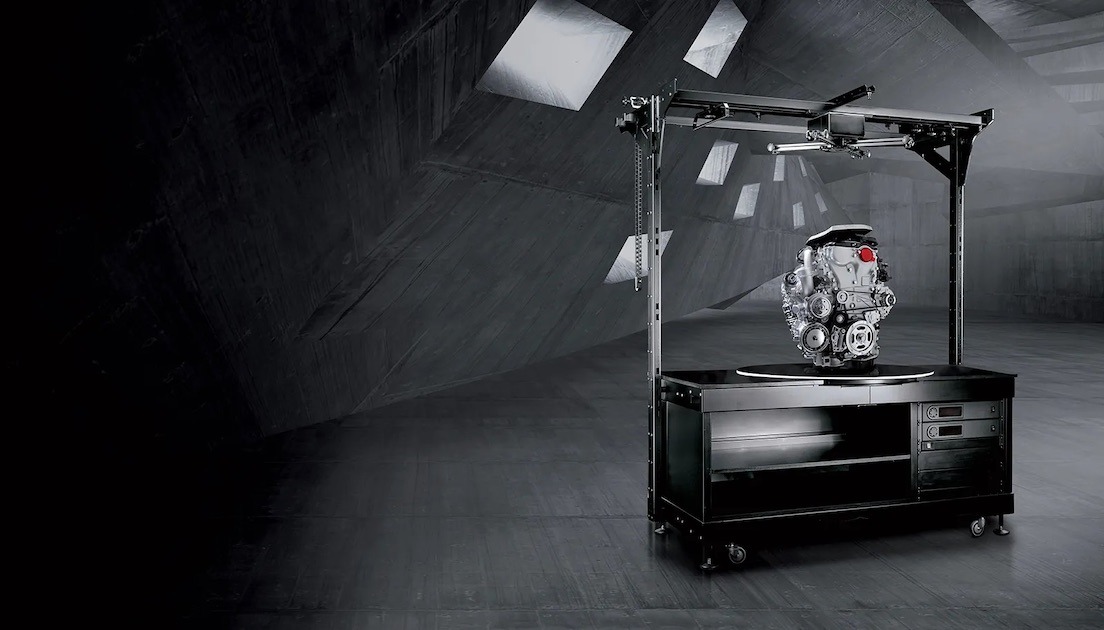
The following documentation serves as a user manual for the PhotoRobot Robotic Turntable with Robotic Arm V8 expansion. This manual is intended solely for use by PhotoRobot customers who have recently purchased a device. It aims to help facilitate the initial understanding, basic testing, and first operation of the robotic workstation. Find a detailed description of the Robotic Turntable with Robotic Arm expansion, including an overview of the workstation and instructions for first-time PhotoRobot use and setup.
Important: The initial installation of a PhotoRobot device must always be carried out by an authorized PhotoRobot authority. Authorities with authorization to install PhotoRobot are an approved distributor, or a representative of the manufacturer itself.
Note: Always refer to PhotoRobot Safety Information & Instructions in addition to the manual provided specifically with your device before first use.
Robotic Turntable with Robotic Arm V8 Expansion
Congratulations and thank you for purchasing your PhotoRobot device! PhotoRobot represents decades of first-hand experience and innovation in automated photography. It delivers technology tailorable to unique needs, while at the same providing a growing ecosystem of ready-made solutions supporting PhotoRobot customers. Stylish and ingenious, PhotoRobot promises easier, quicker, and consistent production every time you power-up the studio. Welcome to PhotoRobot.
1. Workstation Description - Robotic Turntable and Arm V8
PhotoRobot’s Robotic Turntable with Robotic Arm V8 expansion functions as a universal motorized turntable for 360 product photography of heavy objects. The turntable supports small but heavy objects weighing up to 200 kilograms, such as tools, engines, automotive parts, milling machines, and other heavy items. In combination with the Robotic Arm V8, the workstation serves to simplify and accelerate 360 spin and multi-row 3D photography. The robot arm synchronizes image capture as well as movement of the mounted camera with the rotation of the item on the turntable. This enables rapid capture of multiple rows 360 degrees around items, including bottom and top views for streamlined 3D image capture.
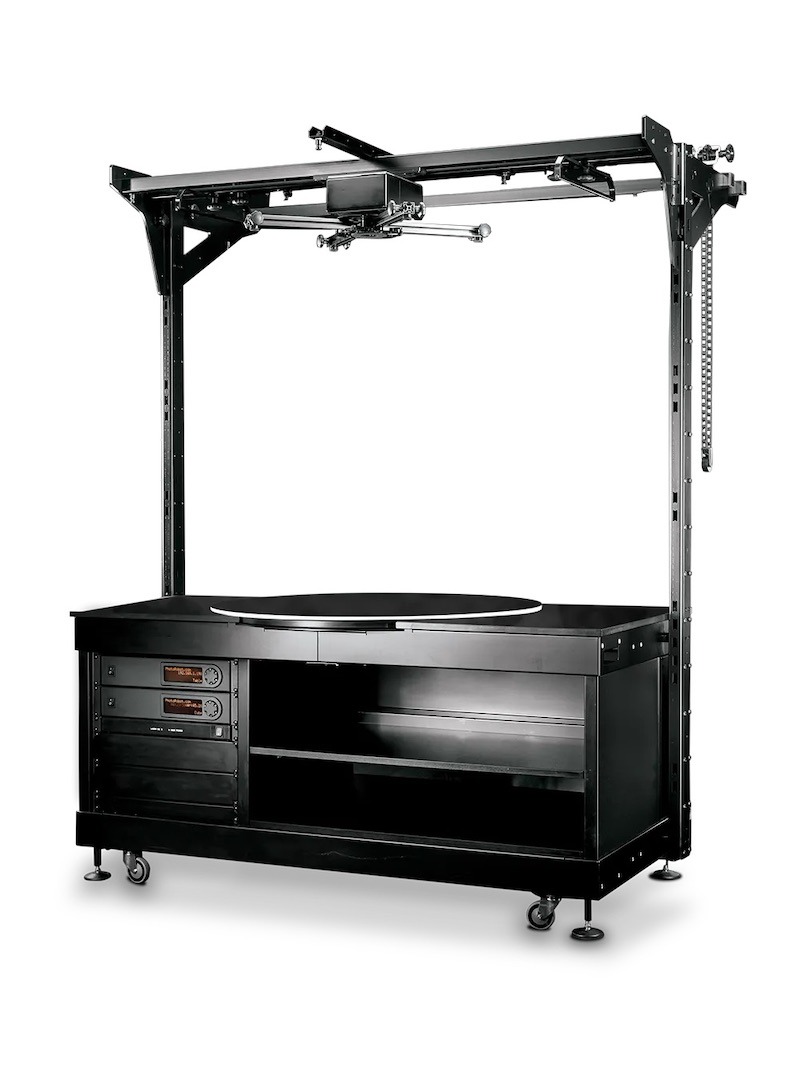
Key features of the Robotic Turntable and Robotic Arm in combination include:
- Heavy-duty turntable with wear resistance and high load bearing capacity of 200 kilograms.
- Turntable plate with overhang over the table edge for photos at the zero angle.
- Laser-guided object positioning to always find the absolute center of rotation.
- Integrated mounts for lighting and cabling through the interior of the turntable frame.
- Remote camera capture in sync with automated turntable rotation.
- Smooth camera movement along a precise trajectory without oscillation of the camera arm.
- Docking station for easy transport and setup of the Robotic Arm.
1.1. Studio Integration - Robotic Turntable and Arm V8
Within the studio, the Robotic Turntable supports photography of small yet heavy objects, while the Robotic Arm V8 has a large mounting range. This allows for versatility in the choice of tripod heads and cameras when using the workstation. Meanwhile, the Robotic Arm has robust construction, precise movement, and two camera arm sizes for capturing objects of different sizes. It is possible to direct the robotic camera arm remotely and in sync with the turntable and studio lights to completely automate image capture and produce highly realistic 3D photos.
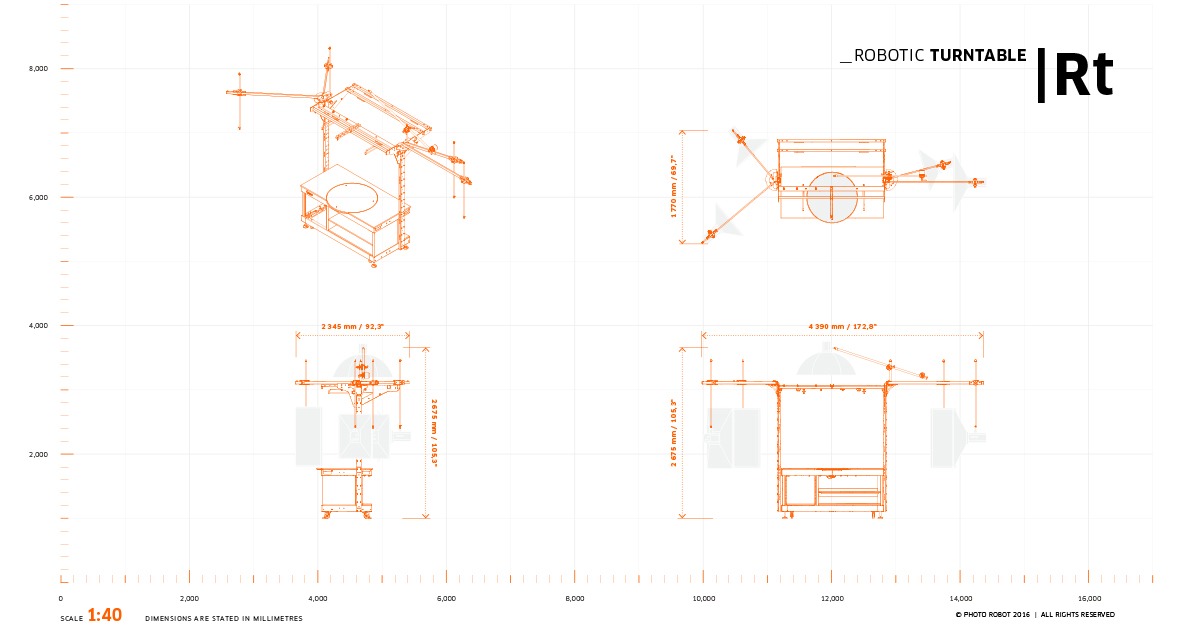
1.2. Control Unit - Robotic Turntable and Arm V8
One of the main components of the Robotic Turntable with Robotic Arm V8 expansion is the Control Unit. The Control Unit is an integral part of the system as it powers up and controls all movement of both the Robotic Turntable and the Arm V8.
The Control Unit is not a physical part of the Robotic Arm. Instead, the Control Unit is physically installed within the Robotic Turntable if both devices are delivered together. The Control Unit is placed in the dedicated HD rack in the top-left front of the Robotic Turntable machine body. Meanwhile, the Robotic Arm V8 docks alongside the Robotic Arm when in use.

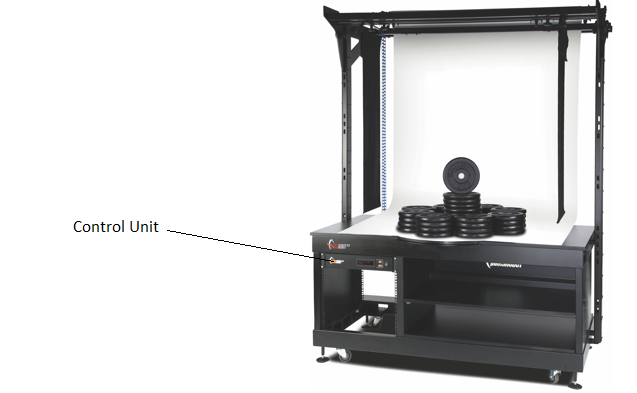

1.3. Robotic Arm V8 Expansion Overview
The PhotoRobot Robotic Arm V8 is compatible with the majority of PhotoRobot rotary turntables and devices for automated 360 photography. It functions in combination with PhotoRobot robots such as the Centerless Table, the Cube, the Turning Platform, C-Class turntables, and more.

Key components of the Robotic Arm V8 include:
- Control Unit (a separate device for control of the Arm and compatible turntable)
- Camera mounting shank (one short, one long, or both)
- Retractable wheels on the machine base for mobility.
- Docking station for quick setup with compatible turntables and devices.
Additionally, the camera arm does not oscillate, so that the camera always moves along a precise trajectory. There is also a large mounting range for flexibility in the selection of tripod heads and cameras, and features for effortless transport and setup.
Note: Refer to the Robotic Arm V8 User Manual for technical instructions on the assembly, operation, and first use of the device.
2. Prior to First Use of PhotoRobot
If using PhotoRobot for the first time, it is necessary to first understand the PhotoRobot solution from a technical perspective. PhotoRobot is a modular unit which consists of hardware and software components. This requires a computer to operate PhotoRobot as well as PhotoRobot itself to be connected over the same network as the computer operating it. Then, the network must have a connection to the internet in order to access PhotoRobot services, which run over the cloud.
Note: Refer to PhotoRobot First Use & Basic Testing prior to first use of the robotic workstation to ensure compliance with technical operating requirements for connection to the network.
In general, the following basic operating requirements exist.
- The Control Unit must connect to the local network.
- A computer is necessary to run Service GUI or the operator’s software called _Controls.
- The computer must connect over the same network as the Control Unit.
- There must be a functional internet connection on the network.
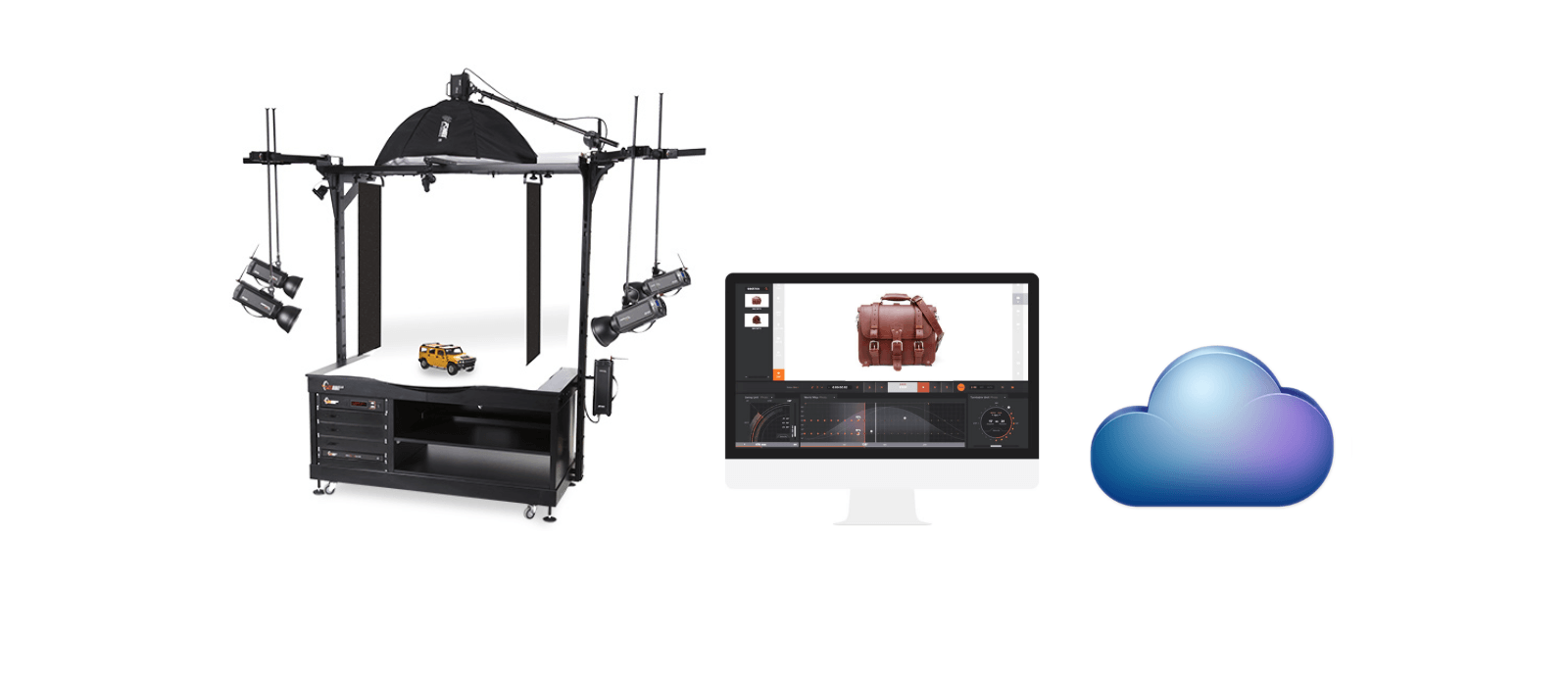
After connecting PhotoRobot to the network, check the electricity distribution system parameters (e.g. voltage and frequency). To do this, use the RJ45 connector on the back of the Control Unit.
Important: If the setup of the Control Unit is not in compliance, set it up first. To do this, locate the manual voltage selector on the back of the Control Unit, and connect the Control Unit to the network via ethernet cable using the RJ45 connector.

Next, ensure the following network configuration requirements for operation of the Robotic Turntable with Arm V8 are met.
- A DHCP server in the network is mandatory.
- TCP ports 7777, 7778 communication must be allowed.
- UDP broadcasts on port 6666 must be allowed.
- Internet connection is mandatory.
- *.photorobot.com access must be allowed.
- as-unirobot.azurewebsites.net access must be allowed.
- Wired connection of PhotoRobot to LAN is recommended.
- Confirm setup by referencing PhotoRobot Networking Prerequisites as necessary.
- Connect the power plug to the power socket.
Finally, press the mains switch on the Control Unit. When the status changes, the light will change from a blinking to a steady light, signaling the Control Unit is ready for operation.
2.1. Find PhotoRobot’s IP Address on LAN
Next, find PhotoRobot’s IP address on LAN using one of the following supporting applications to search the network for PhotoRobot.
- Windows - frfind for Windows
- Mac OS X - frfind for macOS
- Android - PhotoRobot Locator in Google Play
- iPhone, iPad - PhotoRobot Locator on iTunes
Then, after locating a PhotoRobot device, copy the IP address, and paste the address into any web browser in URL format. If successful, this will launch the Service GUI which displays a basic user interface for testing PhotoRobot.
2.2. Basic Testing of the Robotic Turntable and Arm V8
With the Service GUI open, use the simple user interface controls to first power on the motors of the machines. Next, use the left or right arrows next to the pause button to turn the platform to any angle, and then test the movement of the Robotic Arm. If the devices move to the desired angle, the workstation is ready for regular operation.
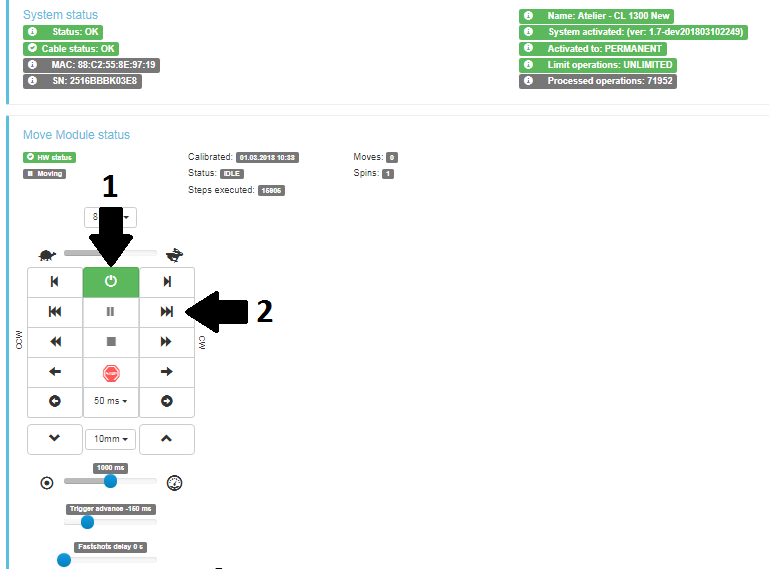
- Turn on the engines ( arrow 1), try to rotate ( arrow 2 ).
- If the robot follows the movement instructions, your PhotoRobot device is ready for regular operation.
3. PhotoRobot _Controls Software Overview
Remote control over the Robotic Turntable with Robotic Arm V8 expansion workstation, including all robots, cameras, and lights is via the software PhotoRobot _Controls. The software manages workflow and provides all necessary functionality for effective automation in post-processing.
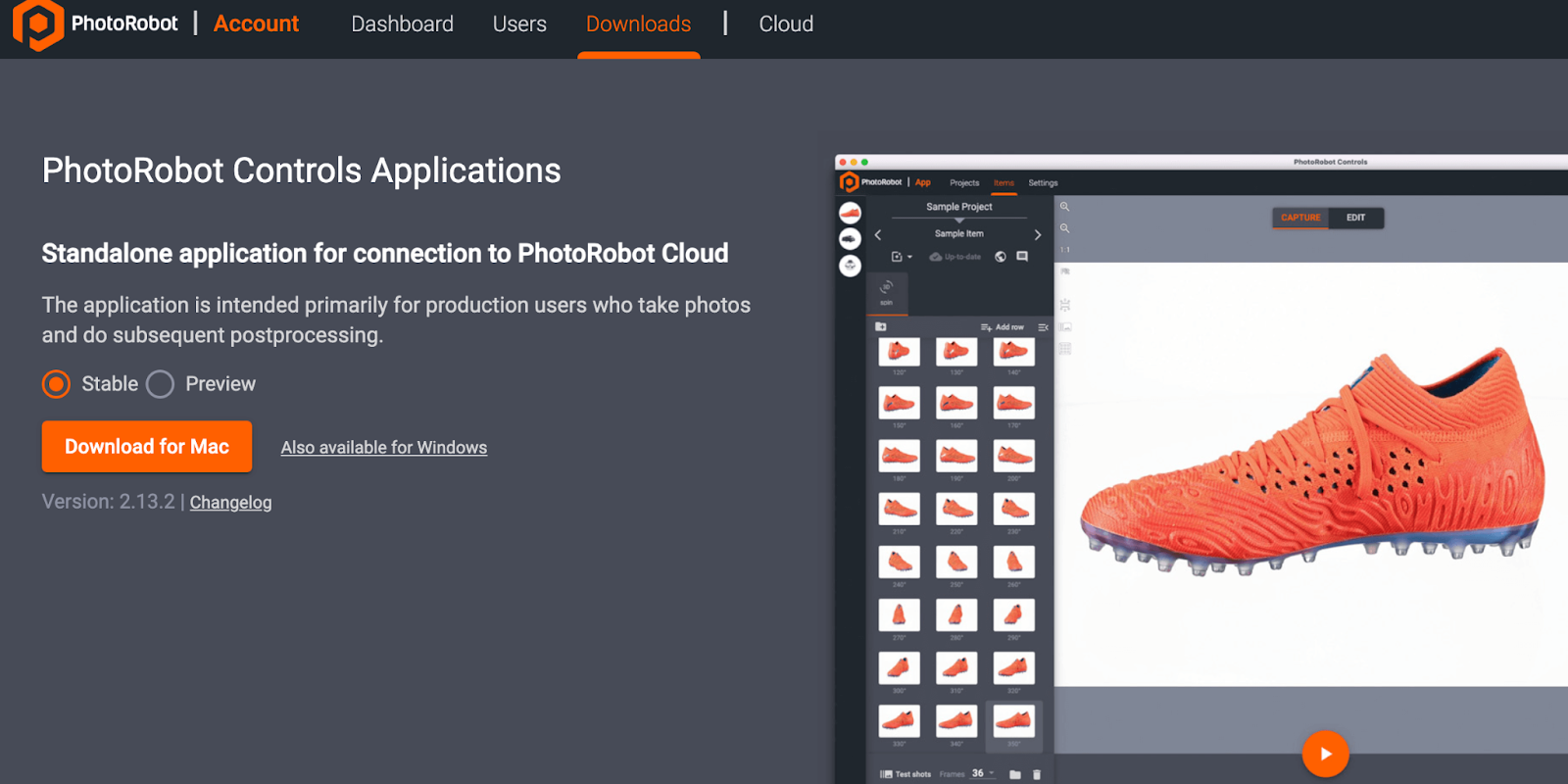
Important: PhotoRobot _Controls is not included with the machine delivery; it is purchased separately and available via your PhotoRobot Account.
For detailed instructions and support on the installation and use of PhotoRobot Controls App Software, refer to the PhotoRobot Getting Started User Manual.
4. Information Labels
4.1. Symbols Overview

4.2. Machine & Component Labels
For information labels for specific machines and components, refer to the section Information Labels (3.1.) from PhotoRobot Safety Information and Instructions.

The Canon EOS Rebel Series offers beginner-friendly DSLR cameras with solid image quality, intuitive controls, and versatile features. Ideal for photography enthusiasts, these cameras provide reliable autofocus, vari-angle touchscreens, and Full HD or 4K video recording.
Connection
Resolution (MP)
Resolution
The Canon EOS DSLR Series delivers high-quality images, fast autofocus, and versatility, making it ideal for both photography and video production.
Connection
Resolution (MP)
Resolution
The Canon EOS M Mirrorless Series combines compact design with DSLR-like performance. Featuring interchangeable lenses, fast autofocus, and high-quality image sensors, these cameras are great for travelers and content creators seeking portability without sacrificing image quality.
Connection
Resolution (MP)
Resolution
The Canon PowerShot Series offers compact, user-friendly cameras for casual shooters and enthusiasts. With models ranging from simple point-and-shoots to advanced zoom cameras, they provide convenience, solid image quality, and features like image stabilization and 4K video.
Connection
Resolution (MP)
Resolution
The Canon Close-Up & Handheld Cameras are designed for detailed, up-close photography and video. Compact and easy to use, they offer precision focus, high-resolution imaging, and versatile macro capabilities—perfect for vlogging, product photography, and creative close-ups.













